| Lazy Lady Farm has one of Vermont's best working Alpine dairy goat herds, offering the region superior genetics as well as remarkable Artisanal Cheese. I have aimed to create a consistent, productive, and profitable herd since forever. If I didn't live in the cheeseroom I would be out there showing them. It brings me great pleasure to care for them and am sure that what I have to offer will be equally rewarding for you. |
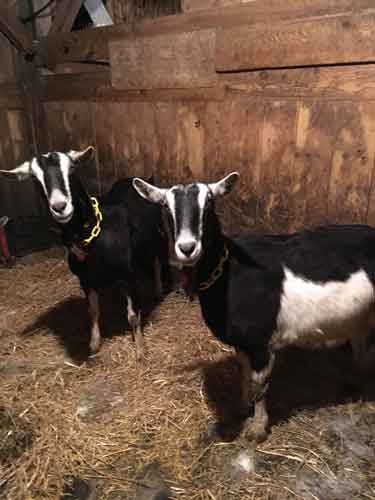 |
| Superior Genetics for the Region |
| I started my dairy with the best locally available does I could find and quickly decided I needed to do better. There was simply not enough milk. I wanted to keep my numbers down and so committed to a lifetime of pursuing the best little milking herd I could put together. For more than three decades Lazy Lady has brought in the best breed bucks and milking does to be had from Oregon, Colorado, and California. Think big time and money. This meant building relations with herd owners, non-refundable deposits, waiting lists, certificates of health, airfare, raising them up, and finally maybe after years of planning putting them into service and see how they do. Repeat. More recently our local vetinarian has offered previously unavailable artificial insemination services. AI allows me to tap directly into the gene pool of the ADGA Top Ten Performance Breed Leaders . No more waiting for bucks that are essentially not for sale. As you poke around in the Breeding List note that by now AI is a recent component of the entire herd's lineage. As AI success rates hover around 50% I'll continue importing bucks and does as always and combine the benefits of both strategies. All of this comes with your kids. |
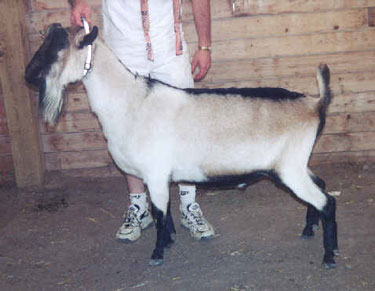 |
| American Dairy Goat Association |
| The deep geneologic record of an ADGA registered herd provides the raw data to plug into the breed improvement tools on hand at the ADGA Genetics website. I try to follow articles in the dairy goat journals about the top ADGA breeders and watch their progress. As we belong to the same club, I can plug my herd into their herd, as it were, and better guage prospective outcomes. Beyond simple observation, I am better able to plan my breedings for all of the acronyms: PTI (Expected Production Indexes), PTA (Predicted Transmitting Ability), ETA (Estimated Transmitting Ability), and linear trait trends for productive and well structured does. A registered herd offers a sense of confidence in my ability to improve the herd and makes me proud to offer offspring from these breedings. |

|
| Dairy Herd Information Association |
|
In addition to a strictly regulated means to record milk production on a monthly basis,
DHIA offers component testing for butterfat, protein, and somatic cell count. This
data can then be linked with the ADGA Genetics tools for better informed breeding decisions.
SHE'S A GOOD MILKER LIKE YOU WOULDN'T BELIEVE SHE'S A GOOD MILKER A good milker should give over 2000 lbs./yr. by her second lactation. It means that a doe will milk up to and over 11 lbs. per day at peak production (months 1, 2, 3) and then gradually taper over the next 6 months from 9 to 6 or 5 lbs. per day. This is derived from proven genetics, great pastures, proper grain feeding, and decent hay. Unsubstantiated milk claims are common and only DHIA records can verify the truth. Ours are posted here. |
| 2024 milk totals pending release by DHIA |
 |
| CAE |
| CAE is a viral infection in goats which can cause encephalitis in kids and chronic joint disease and hard udders in adults. The chief modes of the spread of CAE are 1) ingestion of virus-infected goat colostrum or milk by kids 2) horizontal transmission through exposure at feed bunks and waterers, serial use of needles, equipment contaminated with blood 3) licking the newborn at birth. We have been CAE free since our beginnings. We made that decision right from the start, knowing that once it is in the herd it is so difficult to eradicate. Being CAE free allows us to feed kids unpasteurized milk thus providing essential nutrients and enzymes otherwise lost. We also allow the milk to ripen sometimes for 24 hours to help build up the healthy bacteria that is found in raw milk. This extra bacteria results in fewer incindences of scours and kids going off feed in their early months. We test our goats annually to assure that CAE is never present in the herd and to assure the buyer that these animals are CAE free. These tests are costly but they also are your guarantee and our guarantee. 37 years of being CAE free is quite an accomplishment that we are proud of. |
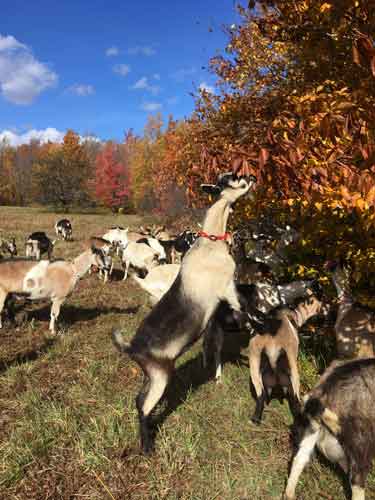 |
| Raising Kids |
| The dams are allowed to fully lick and clean off the kids, but I intervene with colostrum feeding. Kids absolutely need 24 ounces of colostrum in a 12 hour period. Hence I tube feed 8 ounces of colostrum 3 times in that 12 hour period. We then bottle feed individually for 2 days. In that milk I add nutri drench and vitamin C. They are then trained to multi feeder buckets. I keep 6 kids per pen with 2 triple teat buckets. They work their way up to 20 ounces per feeding 3 times per day for a full 2 months. This prevents stress, overeating, and scours. Second cut hay is offered starting at 1 week of age. Grain is introduced by the 4th week. Kids are dehorned between 7 and 10 days old. They are raised up to 50 pounds before weaning and moved up to a shed that is attached to a 1 acre woody area to live in for the summer. They are fed 1 lb of grain per day and 2 lbs. of second cut hay. As kids have less resistance than adults do they are not put on pasture for their 1st year to protect them from parasites and coccidia. Plenty of kelp and minerals are always available. |
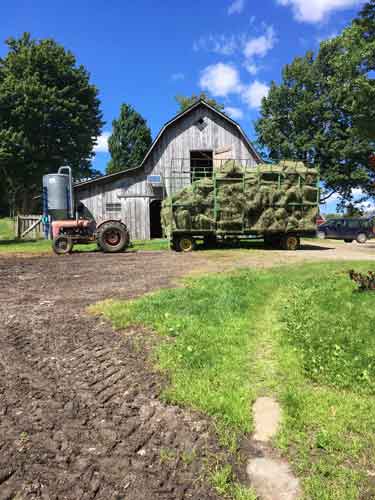 |
| Off Grid |
| The last time Lazy Lady paid an electric bill was 44 years ago while Jimmy Carter was still in office. We had an idea to tread lightly. Operating a highly regulated dairy facility without that connection to power has prooved to be challenging. Our Agency of Agriculture refused to even consider our ability to meet the requirments of a milk handlers license untill a judge ruled otherwise. Equally unenthusiastic about our seasonally regulated ripening cave they preferred a walk-in cooler like everyone else. We have guinea pigged our way through at least three generations of renewable energy equipment. Now that solar has hit critical mass the lesson learned seems not to be how to do more with less but why not use more. The electricity required to mine one bitcoin would have run the average US houshold for 13 years. And now we have artificial intelligence, which in 10 years is expected to eat 2 1/2 times the worlds present total energy diet. |
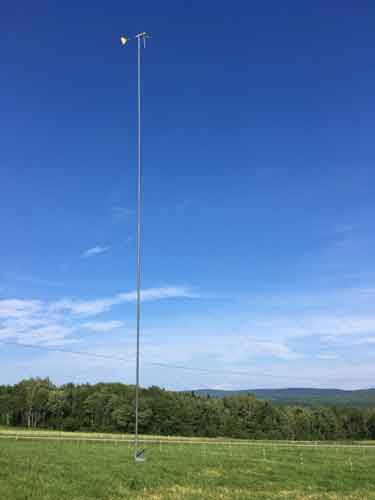 |
| Contact |
|
Laini Fondilier Lazy Lady Farm 973 Sniderbrook Rd. Westfield, Vt 05874 802 595 4473 laini@lazyladyfarm.com |
| Gallery |
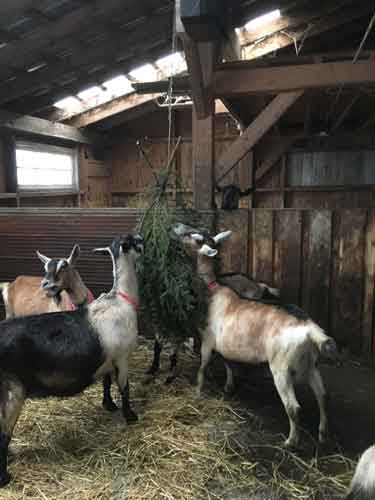 |
| Druids |
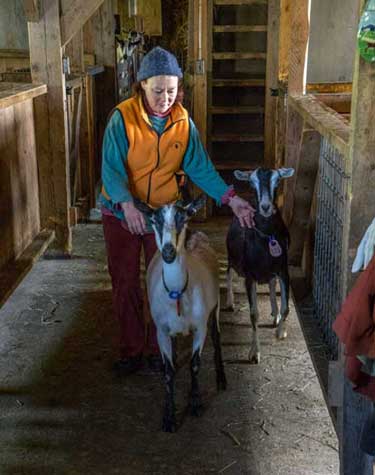 |
| Time to Milk |
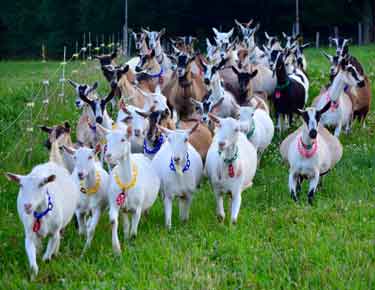
|
| Commuting |

|
| Brothers |
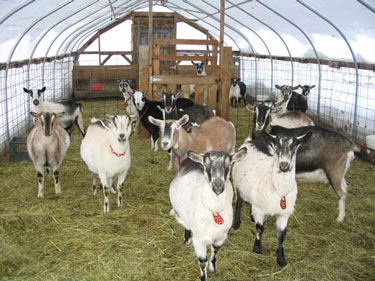
|
| Solarbarn Girls |
| Top |